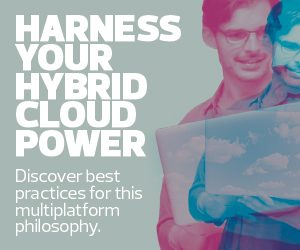In other cases, it can makes sense for companies to keep workloads in-house in a data center or private cloud for performance, latency, compliance, cost and other reasons.
“Organizations are trying to find the right deployment model for the right workload,” says IDC analyst Ashish Nadkarni.
For example, companies wanting to adopt high-end capabilities like artificial intelligence may use the public cloud to get the computing power they need because buying servers with graphics processing units is expensive, he says. But if they have existing databases running critical business functions on-premises, they may need to keep them in their own environment or private cloud.
LEARN MORE: Find out how to optimize your connection to the hybrid cloud.
Qdoba’s Public and Private Cloud Strategy
Qdoba, a fast-casual Mexican restaurant with 740 locations in the U.S. and Canada, standardized on Azure as its public cloud provider because of its ease of use and the many Microsoft SQL Server databases the company uses to run business operations, Burgess says.
“We owned a lot of SQL core licensing, which allows us to move into Azure via their hybrid-use benefit,” he says.
He and his team spent a year migrating applications and data to Azure, including Active Directory and endpoint security management. They subscribed to Microsoft 365 for email and did away with file servers in favor of OneDrive. Legacy apps that they couldn’t move to Azure were placed in a private cloud.
“It was the craziest 12 months of my life. We were focused on migrations and were working 16-hour days,” he recalls.
Today, about 70 percent of Qdoba’s apps and data are on the public cloud. Burgess plans to retire the remaining legacy apps within the next year and a half. “The goal is to move 100 percent to the public cloud,” he says.
To improve application and data access in the cloud, Burgess and his team have spent the past two years modernizing the company’s network infrastructure by adopting SD-WAN and upgrading the switches and Wi-Fi access points at each restaurant with new cloud-managed Cisco Meraki equipment.
The new SD-WAN solution, directly connects Qdoba’s restaurants to both the private cloud and Azure’s data centers and the Internet. For security, Burgess implemented Cisco Umbrella, a suite of security tools that secures users, endpoints and corporate data.
“We wanted to get away from the traditional backhaul approach and have direct connectivity from restaurants to our cloud and Software as a Service providers,” he says.











